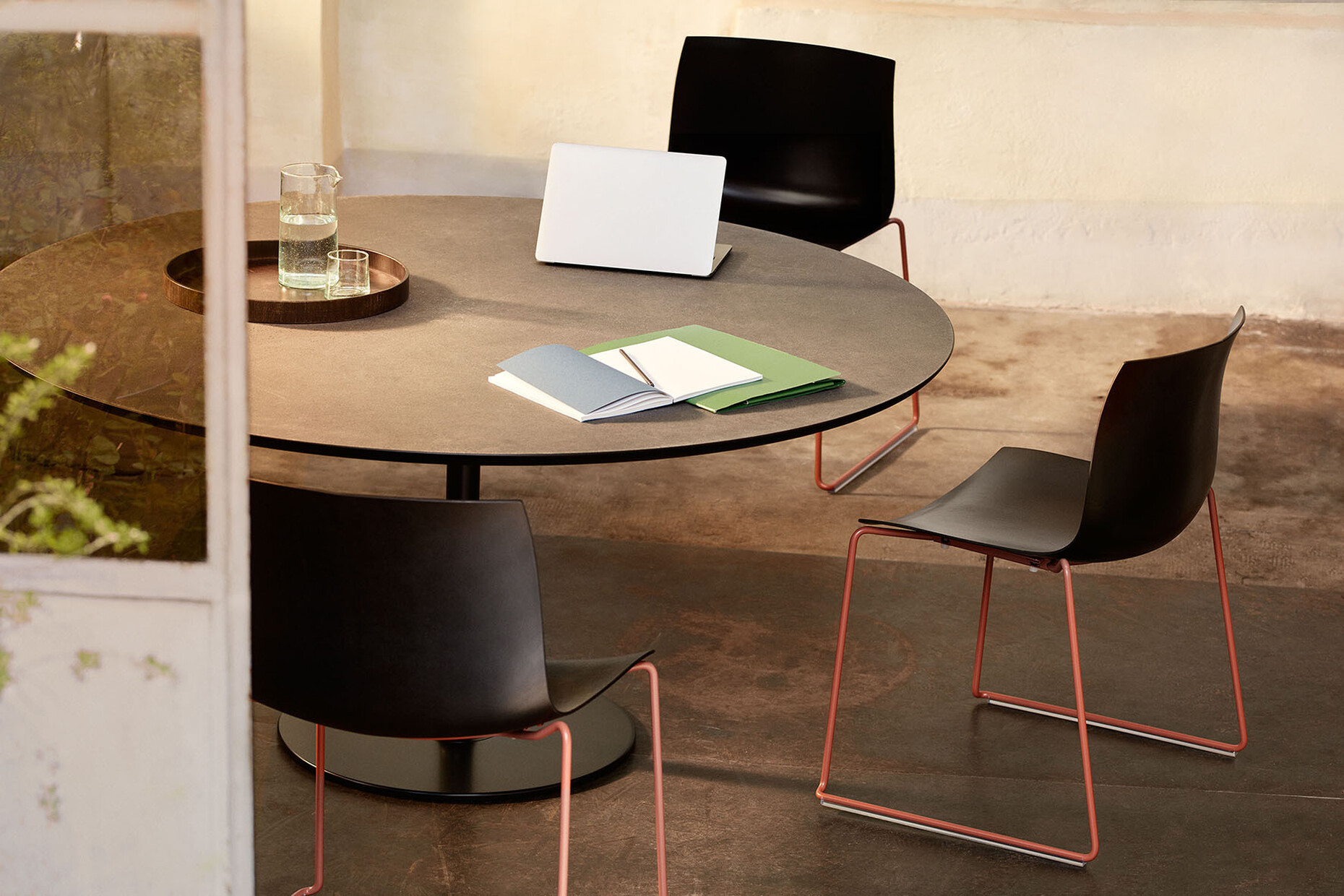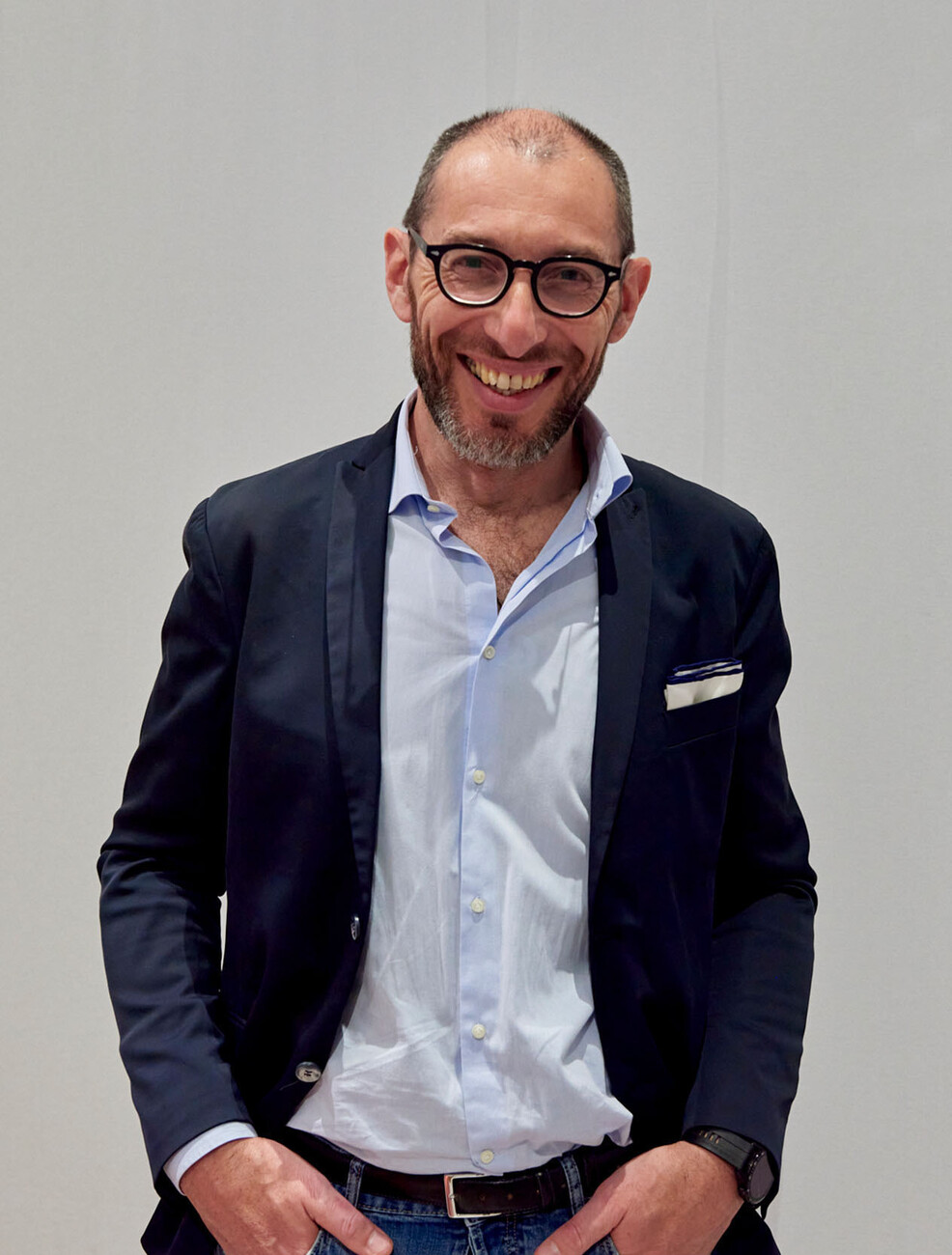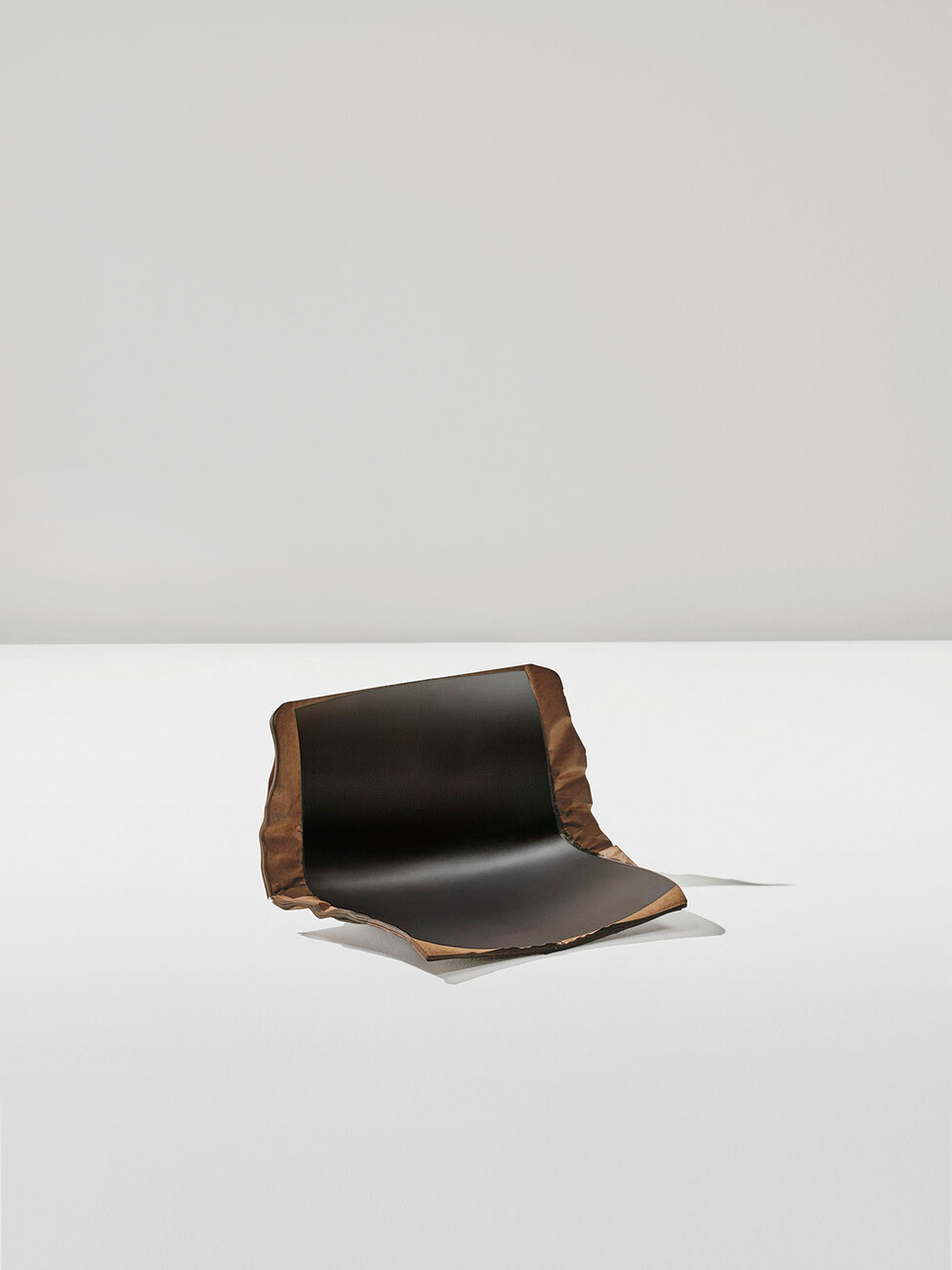STYLEPARK ARPER
Strong paper furniture
Anna Moldenhauer: How did the collaboration with PaperShell AB come about?
Andrea Mulloni: Like any good relationship, the idea grew over time. A few years ago,at a trade fair, Mathieu Gustafsson, one of the founders of PaperShell AB, told us about the research he was doing. A material with reduced carbon emissions is of course of great interest to us. We then conducted joint experiments in order to gain a better understanding of the product’s technical specs, above all the natural resin binder. The team also focused on the extent to which the material can be used for the furniture industry.
What challenges did you have to overcome along the way?
Andrea Mulloni: Nowadays, most furniture is made of wood, plastics and metal. Compared to the progress made in the various technologies, the development of new materials has been moving very slowly and requires all manner of tests. In this case, patience has paid off: The result for “Catifa Carta” is a bi-curved seat shell that would conventionally have to be made from expensive wood consisting of laminated elements with small micro-holes in them. By comparison, PaperShell is affordable and 100 percent biogenic. It comes with the same properties as wood but is made from strong, load-bearing paper. This offers us the opportunity to integrate the material manufactured from PaperShell into various projects, reach out to more people and, consequently, reduce emissions worldwide.
Andrea Mulloni: PaperShell is a true all-rounder – when it came to introducing the material onto the market, we chose an item from the furniture range that is essentially iconic and by virtue of which it’s easy to explain the material’s special properties. The shape of the “Catifa53”, a design brainchild of Lievore Altherr Molina from 2001, was ideal in this regard. Added to which, the chair was Arper’s first product to come complete with an EPD or environmental product declaration.
“Catifa Carta” can be completely disasssembled into its individual parts. How did that impact on the design?
Andrea Mulloni: The shape was in itself already sustainable and basically all we had to do was reengineer the connections between the seat shell and the base in order to retain the original structure while using the new material. You simply can’t insert screws into a shell that is only five millimeters thick. In other words, we needed a new support system, and we created that in PaperShell too. We did not want any elements that could not be disconnected from the others, but we also did not want any visible connections. What we did want was to move the goalposts and that also applied to optimizing the structures that are not immediately evident to the eye.
You rely on local suppliers; where do you get the material for “Catifa Carta”?
Andrea Mulloni: The metal for the frame is provided by our own company, which is based only 70 kilometers away from our main premises in Treviso. PaperShell is currently still being manufactured at the original location in Sweden, but we are at present revisiting the workflow here with a view to keeping the environmental impact as low as possible. For example, we are checking whether the frame and the seat shell can be sent to customers separately. In other words, dividing up the logistics. What’s so great about the production facility in Sweden is that the wood waste required for the kraft paper production procured locally in the immediate neighborhood.
Arper is busy working on a ‘take-back solution’ to enhance recycling; what’s the current project status?
Andrea Mulloni: We already offer a worldwide repair service for our furniture, and we are continously striving to move things forward when it comes to sustainability. Developing a returns system is no small matter as we need to examine numerous aspects, from warehousing the returned items or classifying them all through to processing them further. Fortunately, the material is extremely robust and no impairments to its performance are to be expected over the customary 8-10 years in which the chair will be in use. The plan is that once we’ve got everything worked out PaperShell will mark the launch of the take-back system. We think it makes most sense initially to concentrate on one product and to perfect the process for it. A take-back system only makes sense if only those products are returned to the manufacturer that the latter can re-use or properly recycle. “Catifa Carta” is a good starting point. Moreover, when it comes to the idea of the circular economy we have initiated a pilot project in the Netherlands, where clients are highly responsive. What we do is contact the companies there that purchased furniture from us about ten years ago and establish what repair work is needed. Another aspect here is to bring about a change in outlook. We would like to see a world where repairing or rejuvenating a product after using it for many years becomes a matter of course.
What are your plans for future collaboration with PaperShell AB?
Andrea Mulloni: PaperShell AB is an independent company, meaning it also has not just Arper as a client, which is the way things should be. Sustainable materials should on principle be available to everyone and access not restricted by exclusivity agreements. We will continue to use the new development as a product and explore the opportunities for deploying it in other collections, too. Likewise, we are at the moment evaluating how we can make further use of the waste materials that accumulate during the production process. This kind of proactive thinking on each and every individual way in which we impact the environment and thus on every individual material, now that is what drives us.










